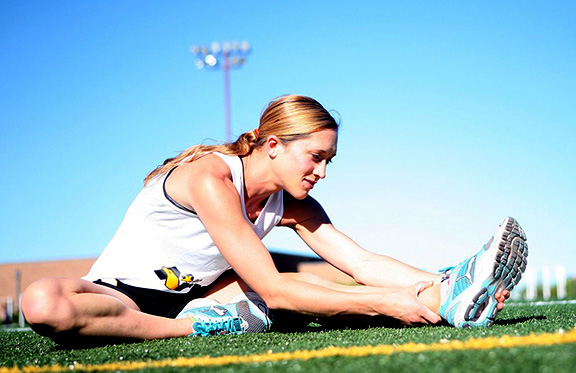Dec 12, 2018A plan to avoid overtraining
Pushing your athletes to work hard and give it their all is a big part of helping them reach their full potential. But you still have to be mindful to not go overboard.
 Fatigue and overtraining are major variables that should never be neglected. The consequences can be severe and, at the very least, inhibit athletic development. That’s why veteran coach Brian Mackenzie recommends carefully designing strength and conditioning programs that account for adequate rest and avoid overtraining or fatigue that can lead to injuries.
Fatigue and overtraining are major variables that should never be neglected. The consequences can be severe and, at the very least, inhibit athletic development. That’s why veteran coach Brian Mackenzie recommends carefully designing strength and conditioning programs that account for adequate rest and avoid overtraining or fatigue that can lead to injuries.
One way to aid in recovery and avoid overtraining is to change up the regular training schedule and lead your athletes through a session of active recovery exercises. Here is a sample training session provided by Mackenzie and Farzad Jalilvand.
General warmup
- 10 minutes: Foam roll, jogging, stationary bike, elliptical Specific low-intensity
- 20 minutes: Dynamic stretching/movement prep e.g. Knee hugs, Cradles, Walking lunge, Lateral lunge, Good mornings
Sport-specific high-intensity movements
- High knees, side shuffles, carioca step, A skips, Dynamic Hamstring kicks, Small sided games (depending on the sport)
Cool-down
- 10 minutes: Foam roll/Static stretching
Regeneration
- 10-20 minutes: Warm water immersion (97-102°F) for full body
Other methods of regeneration
- Full body massage: 10 to 20 minutes
- Sauna: 30 minutes
- Contrast therapy: 20 minutes
- Cold water immersion (53-65°F): 5 to 10 minutes
Along with designing the right training program and incorporating active recovery exercises, it’s important to be able to identify signs of overtraining and dangerous fatigue. With so many young athletes competing on multiple teams at a time, it’s very possible that they’re over-stressing their bodies without taking enough time for rest and recovery. Mackenzie refers to this as “adaptive body stress,” and describes how coaches can spot when this stress starts to negatively affect an athlete’s wellbeing.
The types of symptoms to look out for can be broken down into three categories. Closely monitor your athletes, and anytime you notice these symptoms Mackenzie recommends decreasing training loads and focusing on recovery.
Movement coordination symptoms
- Increased incidence of disturbances in movement (the re-appearance of faults that seemed to have been overcome, cramp, inhibitions, insecurity)
- Disturbances in rhythm and flow of movement
- Lack of ability to concentrate
- Reduced power of differentiation and correction
Condition symptoms
- Diminished powers of endurance, strength, speed. Increase in recovery time, loss of ‘sparkle’ (competitive qualities)
- Reduced readiness for action, fear of competition, giving-up in face of difficult situations, especially at the finish
- Confusion in competition, departure from usual tactics
- Susceptibility to demoralizing influences before and during competition
- Increasing tendency to abandon the struggle
Psychological symptoms
- Increased irritability, obstinacy, a tendency to hysteria, grumbling, defiance, increased quarrelsomeness, avoidance of contact with coach and colleagues
- Oversensitivity to criticism, or increasing indolence, poor incentive, dullness, hallucination, anxiety, depression, melancholy, and insecurity



